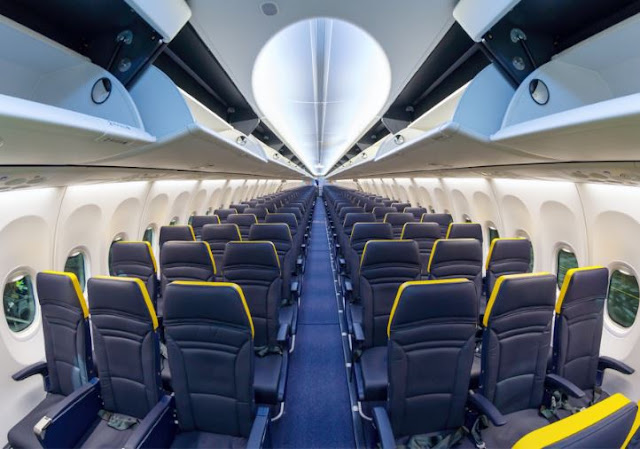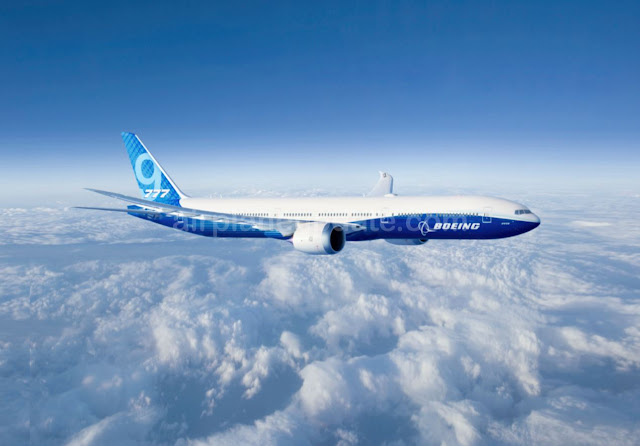Boeing 737-900 Next-Generation Specs, Interior, Cockpit, and Price
Admin
01:00
Boeing 737-900 Next-Generation Specs, Interior, Cockpit, and Price – The Boeing 737-900 is the largest aircraft variant of the Boeing 737 Next-Generation (NG) family. This aircraft was launched in 1997 and made its first flight on 3 August 2000. The Boeing 737-900 began operating in May 2001.
In July 2005, Boeing launched the 737-900ER with an increased range and passenger capacity. The Boeing 737-900 ER is a development version of Boeing Next-Generation which operates in Indonesian airports. Lion Air Indonesia is a launch customer with 175 aircraft orders.

The landing system of the Boeing 737-900 is a three-wheeled hydraulic retractable landing gear type wheel. The gears are equipped with oleo-pneumatic shock absorbers designed by Boeing. The main wheel pulls in with the wheels forming a well seal; the well has no door. The main wheels are equipped with Honeywell or Goodrich wheel brakes. Twin nose wheel pulled forward.
Noise on the ground is reduced to 12dB by installing a new diffuser duct and dampers on the cooling vents on additional power units. A new quiet operating fan has been installed in the environmental control system and in the electronic cooling system.
Boeing 737-900 can fly with a maximum speed of 876 km / h and a cruising speed of 823 km / h. The fuel capacity that can be carried by the aircraft is 29,660 L. The aircraft has an empty weight of 44,676 kg and a maximum take-off weight of 85,139 kg. The aircraft can cover a range of up to 6.045 km.


Boeing 737-900's cockpit has also been equipped with Head Up Display (HUD). This equipment is usually used on military aircraft. Its function is to facilitate the pilot in determining the tilt of the aircraft both vertically and horizontally. In addition, this aircraft can be equipped with an optional global positioning system, satellite communications, and dual flight management systems.
In July 2005, Boeing launched the 737-900ER with an increased range and passenger capacity. The Boeing 737-900 ER is a development version of Boeing Next-Generation which operates in Indonesian airports. Lion Air Indonesia is a launch customer with 175 aircraft orders.

Boeing 737-900 Next-Generation Specs
The Boeing 737-900 fuselage was built using safe aluminum material. The aircraft wing has a fail-safe design with an aluminum alloy structure with corrosion resistant leather. Nosecone fairing, wings and fuselage, fin tips, fairing of flap actuators and other non-pressure components are constructed of glass fiber and carbon reinforced plastic (GFRP and CFRP). The back of the engine nacelles is built from graphite, Kevlar and glass fiber composites. Overall, the dimensions of the Boeing 737-900 include 42.1 m in length, 12.5 m in height, and 35.8 m in wingspan.The landing system of the Boeing 737-900 is a three-wheeled hydraulic retractable landing gear type wheel. The gears are equipped with oleo-pneumatic shock absorbers designed by Boeing. The main wheel pulls in with the wheels forming a well seal; the well has no door. The main wheels are equipped with Honeywell or Goodrich wheel brakes. Twin nose wheel pulled forward.
Boeing 737-900 Next-Generation Engine and Performance
The Boeing 737-900 is powered by two CFM56-7B27 turbofan engines supplied by CFM International. Each engine can produce a thrust of 121.4 kN. The machine is supplied by CFM International. Each engine is mounted on a pod engine under the wing. The aircraft is equipped with an additional Honeywell 131-9B power unit, which provides 90 kVA and air start capability.Noise on the ground is reduced to 12dB by installing a new diffuser duct and dampers on the cooling vents on additional power units. A new quiet operating fan has been installed in the environmental control system and in the electronic cooling system.
Boeing 737-900 can fly with a maximum speed of 876 km / h and a cruising speed of 823 km / h. The fuel capacity that can be carried by the aircraft is 29,660 L. The aircraft has an empty weight of 44,676 kg and a maximum take-off weight of 85,139 kg. The aircraft can cover a range of up to 6.045 km.

Boeing 737-900 Next-Generation Cabin and Interior
The Boeing 737-900 cabin can accommodate 178 passengers in a two class configuration, usually arranged with four first class passengers following and six tourist class passengers following. The cabin has a maximum capacity of 220 seats. Air-conditioned cab with an air cycle environmental control system. Airstairs is optional for the front cabin, which allows the aircraft to operate in an airport measuring conveyor.
Boeing 737-900 Next-Generation Cockpit and Avionics
The Boeing 737-900 cockpit accommodates pilot and co-pilot. The cockpit is equipped with a Common Display System (CDS) from Honeywell Air Transport Systems which combines six flat panel liquid crystal displays. The CDS software can be programmed to enable the presentation of data in the replication format of the main Boeing 777 electronic flight system and navigation and navigation display.Boeing 737-900's cockpit has also been equipped with Head Up Display (HUD). This equipment is usually used on military aircraft. Its function is to facilitate the pilot in determining the tilt of the aircraft both vertically and horizontally. In addition, this aircraft can be equipped with an optional global positioning system, satellite communications, and dual flight management systems.























